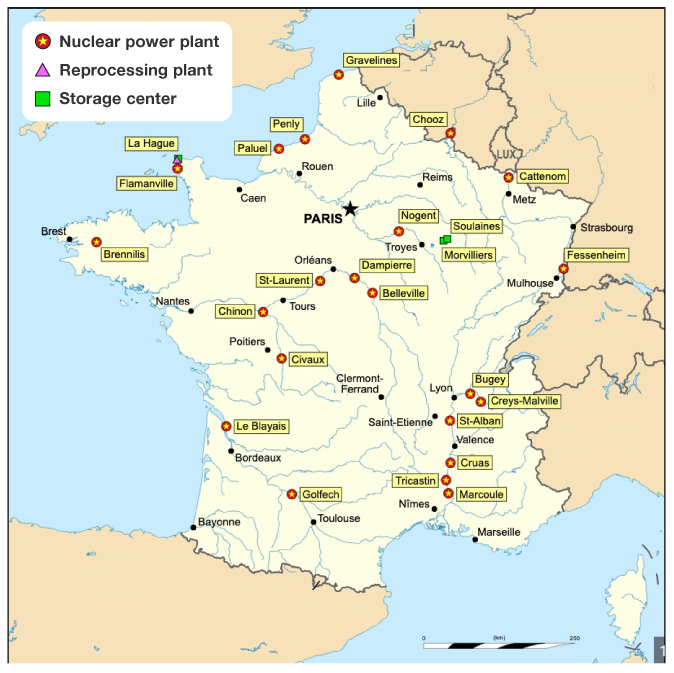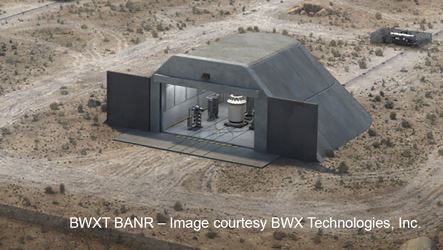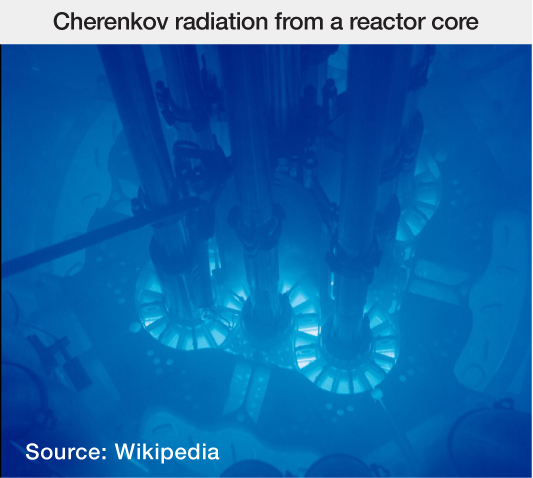
Freedom Cities: The One Company Powering America’s Nuclear Renaissance

Artificial intelligence is one of the most transformative technologies to emerge in decades. It has already changed the way we do business, and it’s only getting started. AI’s computing power requirements are doubling every nine months.
Data centers alone are expected to use 1,000 terawatt-hours (TWh) by 2030. That’s enough energy to light 1 billion homes − about half of the houses on the entire planet.
But if President Trump’s innovation hubs called “Freedom Cities” become as impactful and as transformative as many expect, that number could end up looking conservative.
The United States will need a staggering amount of energy to power these Freedom Cities and turn the tide against China in the AI race… and nuclear power is one of the only options that can produce that volume of electricity cheaply and in an environmentally friendly way.
Nuclear produces less greenhouse gases and waste than wind power and is much more efficient than both wind and solar.
The main problems with producing nuclear power have been cost and time.
A modern nuclear reactor typically costs around $5,366 per kilowatt to build. At that rate, a 1-gigawatt reactor would cost $5.4 billion. The equivalent wind farm costs $1,980 per kilowatt and a new oil plant costs $912 per kilowatt.
So nuclear reactors are more expensive to build… but the costs are upfront.
Reactors run at capacity more often than wind farms or fossil fuel plants. They also require much less fuel, need less frequent refueling, and don’t need consumable parts (like wind turbine blades).
So in the long term, the costs become much cheaper compared with other energy sources.
But the other issue is that building a traditional reactor takes a lot of time. The parts are large and must be built perfectly to avoid meltdown.
It took France, a country that gets 70% of its power from nuclear energy and even exports electricity to its neighbors, 20 years to build its 56 reactors across 18 commercial power plants. The project started in 1972 and finished in 1992.
In December 2024, France connected another nuclear reactor to its national electricity grid to bring the total number of reactors in the country to 57.

Even adding a reactor to an existing plant can be time-consuming. In Georgia, a project to add two new reactors to the Vogtle plant began in 2009 and didn’t finish until 2024. Along the way, the project’s cost more than doubled from $14 billion to $30 billion.
On top of that, the whole of France is only about the size of Texas, so it would take significantly more time and money for the U.S. to build out a nuclear grid like France has.
However, modern technology − and one company in particular − may have developed a solution to both issues: small modular reactors, or SMRs.
These are pint-sized nuclear reactors that take up a fraction of the space a traditional nuclear power plant would. They essentially roll off an assembly line.
The U.S. military has utilized smaller reactors in their fleet of nuclear submarines and aircraft carriers for decades, but the new generation of commercial SMRs takes this technology to a new level.
These SMRs use next-generation nuclear technology that is faster, more efficient, cheaper, and, most interestingly, mobile.
Now a new crop of companies are developing SMRs for use on land as traditional power plants. Plop one of these down next to some data centers running AI software, and their energy issues are solved by the power of the atom.
America’s nuclear champion − the company that I believe is the single most important player in Trump’s plan to build Freedom Cities across the nation and usher in a new era of American technological dominance − is Lynchburg, Virginia-based BWX Technologies (NYSE: BWXT).
Your Friendly Neighborhood Reactor
Those sub- and ship-based reactors I mentioned earlier? BWXT made most of them. It has delivered more than 400 reactors to the Navy for its vessels, has built 325 steam generators for nuclear power plants, and has been at the bleeding edge of nuclear science for more than 60 years.
It owns the only large, commercial nuclear equipment manufacturing facility in North America. It builds reactor components like heat exchangers, pressurizers, spent fuel containers, and more. It’s been the Pentagon’s most trusted nuclear contractor for almost 75 years. Most important for our purposes, it’s building the first advanced nuclear microreactor in the United States under a Department of Defense contract.
But how will BWXT help solve our energy problems and power America’s Freedom Cities?
America’s 54 nuclear power plants generate just shy of 20% of our electricity. If you live east of the Mississippi, there’s a good chance you use nuclear power daily. But those plants are enormous (the Vogtle plant I mentioned earlier takes up 3,000 acres) and are usually built on rivers or lakes to give them the fresh water they need to operate.
However, BWXT’s SMR, dubbed the BWXT Advanced Nuclear Reactor, or BANR, can fit on the back of a flatbed truck. And that’s precisely the idea. The reactors roll off BWXT’s assembly line, get loaded onto the back of a truck, and then get shipped out to the miniature nuclear power plant where they will generate power.
This is crucial for the data center buildout for AI.
If a Big Tech company like Amazon wants to build a new data center to power AI technology, but it needs access to power… it’ll be able to order an SMR from BWXT.
And as Freedom Cities and their enormous energy needs become a reality, these SMRs can be set up anywhere in America − even the proposed location in the plains of Idaho − within a matter of weeks.
One BANR is rated to deliver 50 megawatts of power. It doesn’t need a traditional water source like current reactors do, either. It’s a high-temperature, gas-cooled reactor (HTGR), so it uses helium as coolant, as opposed to water. It also only needs refueling every five years as opposed to the industry standard of two.
Because it’s truck- or train-portable, the BANR doesn’t need any of the traditional infrastructure of a traditional reactor. That means it can essentially be deployed anywhere.

Take the hurricanes that tore through North Carolina, Georgia, and Tennessee in 2024. It took weeks for state governments and FEMA to get the power back on, and people died as a result. BWXT could have solved that problem. Truck a BANR to the site, set it up, and it’s producing 50 megawatts of power as soon as the reaction starts.

The military and disaster relief applications are obvious. But Big Tech will be using this the most. If Elon Musk is correct and we begin facing power shortages in the near future, you can bet Amazon, Google, Meta, and others won’t stand for it. I’d expect them to get BANRs shipped in and set up right away.
Some will likely want more permanent solutions, like GE-Hitachi’s BWRX-300 SMR, which it aims to launch globally in 2029.
The BWRX-300 is essentially a larger, more permanent take on BWXT’s BANR. It’s a very small modular power plant capable of generating 300 megawatts of power.
But the key thing to know here is that BWXT will be engineering and supplying the reactor pressure vessel, or RPV, for GE’s reactor. (The RPV contains the reactor core and its internals – it’s the largest and among the most critical parts of a nuclear plant.)
So, whether a business or community wants small and temporary or large and permanent, BWXT will profit from its extensive expertise in nuclear engineering.
Speaking of profit, BWXT isn’t some flash-in-the-pan startup with a wild idea. It was founded in 1867 as Babcock & Wilcox Company. Blue chips don’t get bluer than that.
But that’s not all. BWXT is also a major player in the medical industry. It entered the nuclear medicine industry in 2018 with the acquisition of Nordion’s medical isotope business.
In January 2025, the company announced the agreement to acquire Kinectrics Inc. for approximately $525 million. Not only is Kinectrics is a leader in lifecycle management services in the nuclear power markets, but it also supplies isotopes for the radiopharmaceutical industry. This acquisition will expand BWXT’s portfolio of products and services available for current and new customers. BWXT finalized the deal in May 2025, which doubled the workforce of its Commercial Operations group.
The growth in the company’s commercial business revenue was in large part driven by its burgeoning medical sector.
The Nuclear Option
BWXT is an incredible stock. It has the balance sheet of the 158-year-old blue chip it is, combined with immense growth potential thanks to America’s pending nuclear renaissance.
Better yet, BWXT’s revenue has been on a tear for years. Over the past five years, annual revenue has increased at a compound annual growth rate (CAGR) of 7.4%. That trend has accelerated over the last three years, reaching a CAGR of 8.4%.
Total revenue for 2024 was up 8.3% over 2023’s, totaling $2.7 billion. Net income for 2024 topped $281.9 million, up almost 15% over 2023’s. EPS for 2024 grew 15% to $3.08.

In the second quarter of 2025, BWXT brought in $764 million in revenue, up 12% year over year. Operating income for the quarter rose 3.6% year over year, net income climbed 7.4%, and earnings per share rose 7.5%.
To put icing on the cake, BWXT has a 0.5% dividend yield, and it has grown that dividend by 10.6% annually over the last four years.
Business is booming, to say the very least, and BWXT is expanding its Cambridge plant in Ontario, Canada, to accommodate the demand for nuclear plant equipment and SMRs. The CA$50 million expansion will increase the factory’s footprint by 280,000 square feet. It will then be followed up with CA$30 million in new equipment and tooling to manufacture SMRs faster than ever before to meet new demand. The project is expected to be completed by mid-2026.
In April 2025, BWXT announced the acquisition of approximately 97 acres of land in the Horizon Center Industrial Park in Oak Ridge, Tennessee. This deal is an additional step in BWXT’s long-term commitment to restoring the nation’s domestic uranium supply and its intent to support future defense missions for the U.S. Department of Energy’s National Nuclear Security Administration (NNSA) and other projects.
Lastly, the collaboration between BWXT and the Department of Defense to construct a reactor at the Idaho National Laboratory is ongoing. It will be America’s first Generation IV nuclear reactor, and BWXT expects it to “[provide] resilient and reliable electricity for up to three years without refueling.”
BWXT has the stability and revenue of a blue chip but the growth potential of a much smaller stock. As nuclear power becomes more mainstream and Freedom Cities begin to pop up around the country, I think that will act as a tailwind and push the stock to new heights.
Bottom line: The stars are aligning for BWXT to be a key player in the greatest infrastructure buildout America has seen in over a century.
Recommendation: Buy BWX Technologies (NYSE: BWXT) at market. Set a 25% trailing stop to protect your principal and your profits.